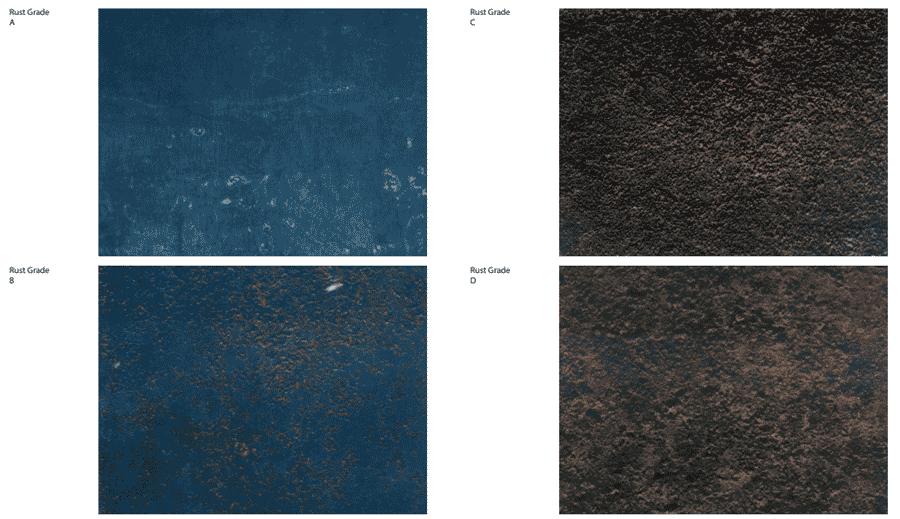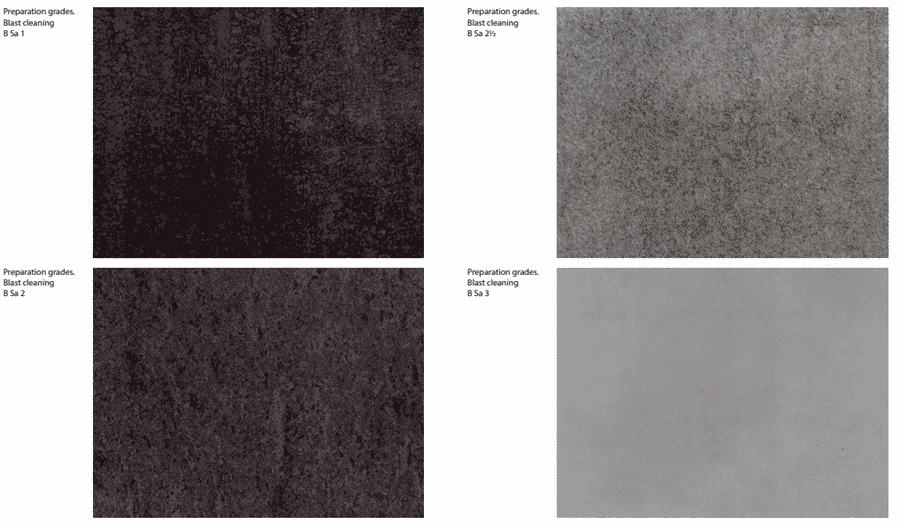Surface preparation is the essential first stage treatment of a steel substrate before the application of any coating, and is generally accepted as being the most important factor affecting the total success of a corrosion protection system. Before you begin steel surface preparation, you should understand what to expect from the process. The first step in the corrosion prevention process is steel surface preparation. A properly prepared surface increases the adhesion and performance of coatings. Steel surface preparation involves removing physical defects and contaminants on the surface. This process typically involves grinding or blasting. If your steel plate surface preparation is required by an inspector, you should consult a standard before attempting to apply coatings. You should also check whether any paints are compatible with the surface. By following these standards, you’ll ensure the success of the coating application process.
BS EN ISO 8501-1 details the rust grades for steel surfaces from A to D. These grades can help you determine the appropriate techniques to use and the success of the preparation. This standard also describes how to measure and profile the surface to determine mechanical keys for subsequent processing steps.

Source From: HMG Paints Ltd
Grade A: Steel surface included definitely with adherent mill scale and with little if any rust.
Grade B: Steel surface which has begun to rust and from which the mill scale has begun to flake.
Grade C: Steel surface on which the mill scale has rusted away or from which it can be scraped, however with little pitting seen to the bare eye.
Grade D: Steel surface on which the mill scale has rusted away and on which considerable pitting is seen to the bare eye.
The first step in steel surface preparation is cleaning. These contaminates may include mill scale, rust, or old paint or coatings. A properly prepared surface is a must for the protection of a steel asset. SSPC has set industry standards for steel surface preparation. The next step in steel surface preparation is to use the proper power tools. The standards have been in cooperation with the American Society for Testing and Materials, ASTM, and Steel Structures Painting Council, SSPC. The SSPC recommends power brushing and rotary tools. The SSPC-SP1 requires the use of solvents to remove visible contaminants and oxidation. While using these tools, you should make sure to blow off any excess dust before and after the cleaning process. Aside from these tools, you should also remove any oil, grease, or dust before and after the cleaning process.

Source From: HMG Paints Ltd
Sa 1 (SSPC-SP7): Light Blast Cleaning.
Using an accepted easy guide brush, grinding with emery cloth. An approach in which all oil, grease, dirt, rust scale, loose mill scale, unfastened rust and free paint or coatings are eliminated completely. However, all mill scale and rust need to have been uncovered to the abrasive blast sample sufficiently to expose several flecks of the underlying steel pretty uniformly dispensed over the whole surface.
Sa 2 (SSPC-SP6): Thorough Blast Cleaning
Sandblasting preparation is the lowest grade in sandblasting processing. All oil, grease, dirt, rust scale and overseas count number are definitely eliminated from the floor and all rust, mill scale and historical paint are totally eliminated by way of abrasive blasting without moderate shadows, streaks or discolorations brought on by using rust stain, mill scale oxides or slight, tight resides of paint or coating that remain. If the floor is pitted, the moderate residue of rust or paint might also be located in the backside of the pits; at least two-thirds of every rectangular inch of floor vicinity shall be free of all seen residues and the rest shall be restrained to the mild residues cited above.
Sa2.5(Sa 2½): Near White Blast cleaning
It is extensively used as the acceptance degree of technical necessities and standards. In this method, all oil, grease, dirt, mill scale, rust, corrosion products, oxides, paint or different overseas remember have been totally eliminated from the floor with the aid of abrasive blasting, without very mild shadows, very moderate streaks, or moderate discolorations brought on by using rust stain, mill scale oxides or slight, tight residues of paint or coating. At least 95% of every rectangular inch of floor vicinity shall be free of all seen residues, and the rest shall be constrained to the mild discolorations noted above. From a realistic standpoint, this is possibly the excellent best floor training that can be predicted these days for present plant facility preservation work.
Sa 3(SSPC SP5): Blast Cleaning to pure metal
The easiest grades of elimination of floor preparation. all rust, mill scale, paint and contaminants, leaving the metallic uniformly white or grey in appearance. This is the last in blast cleaning. Use the place most overall performance of shielding coatings is essential due to extraordinarily extreme stipulations such as steady immersion in water or liquid chemicals.
The surface condition of steel is critical for the successful application of a protective coating system. The surface must be free of rust, mill scale, surface contaminants, dust, and other pollutants. All of these factors can compromise the protection of a protective coating system. So, when you’re planning a new project, make sure to prepare your steel surface thoroughly and properly before starting work. If the surface is contaminated with oil or dirt, adhesion failures will occur. An oily surface can prevent adhesion altogether. A properly prepared surface is essential to the proper application of coatings, adhesives, and welds. It also ensures the highest level of mechanical bonding and minimizes mechanical damage. By ensuring a good surface, you can be sure your coating or weld will adhere to the metal surface without any problems.






